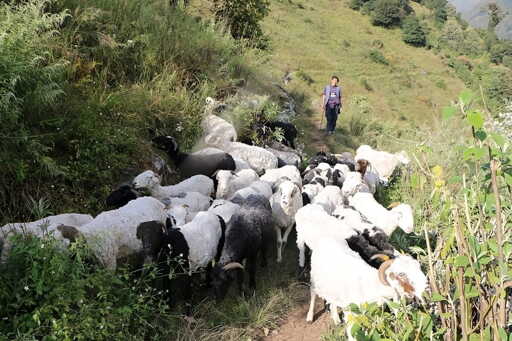As the monsoon clouds recede in Nepal in late September, herders Karma Gurung and Dhana Raj Ghale, who have spent three summer months at an elevation of 4,044 meters (13,270 feet) above sea level, are returning to lower lands with their cattle herds. In Nepal’s rugged Himalayan mountains, life follows the rhythm of the seasons. During the short summers, pastoralists move their livestock to high-elevation pastures where melted snow reveals fresh, nutritious grass and herbs, while in winter, they descend to lower valleys to escape the bitter cold. “We have descended to an elevation of 3,100 meters [10,170 ft], and we will reach our village in Ghermu at 1,140 meters [3,740 ft] elevation by November 1,” Gurung tells Mongabay over the phone. Their journey was planned in March, when around 300 households from Ghermu village in Marsyangdi Rural Municipality, Lamjung district, gathered on the edge of their alpine pastures. They were there for an annual age-old tradition: deciding how and where to allow livestock to graze for the year under the guidance of thiti, a Gurung community institution passed down through generations. Sheep herd moving to lower altitudes with the end of summer. Image courtesy of Sita Ram Guragain. “This system has guided our community for generations,” says Ghanashyam Ghale, an elected ward chair of the municipality. “It allows us to live in this harsh environment while conserving our natural resources.” As climate change threatens alpine grasslands, conservationists are pointing to the centuries-old thiti system, which combines rotational grazing, collective…This article was originally published on Mongabay
From Conservation news via this RSS feed


